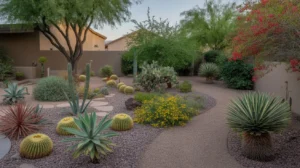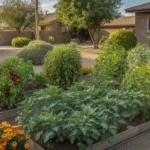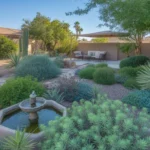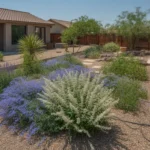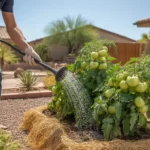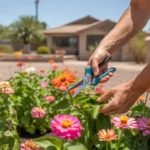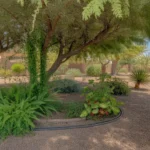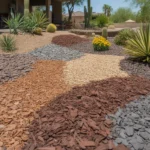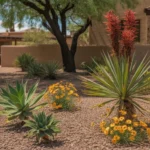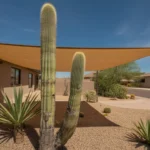Planting a desert-friendly landscape in Gilbert takes a bit of know-how, but the results are well worth the effort. By choosing native and adapted plants that thrive in our hot, dry climate, you can create a beautiful, low-maintenance yard that’s both eco-friendly and easy on the eyes. Here are some smart tips to get you started with desert planting in your Gilbert backyard.
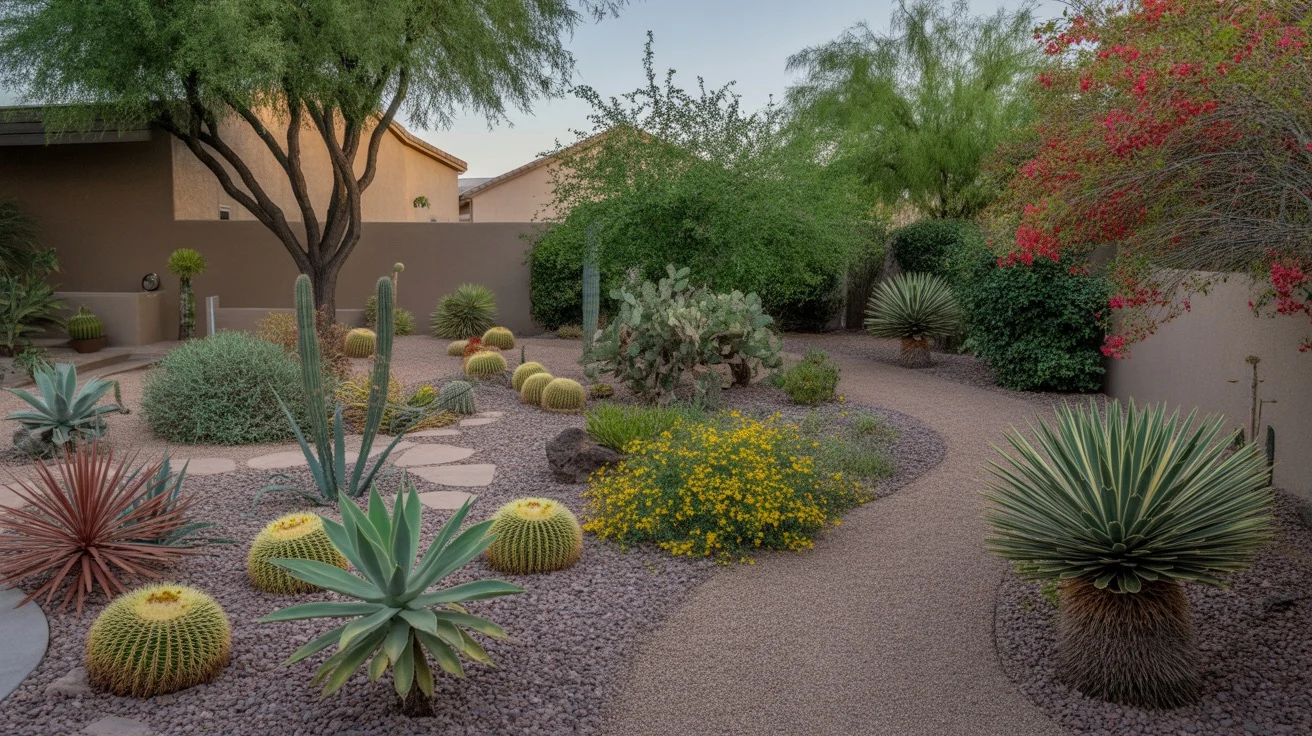
Choose Native and Desert-Adapted Plants
The key to successful desert planting is selecting the right plants for our climate. Native plants like chuparosa, brittlebush, and desert marigold are naturally adapted to survive with minimal water and care. They’ve evolved to handle intense sun, low humidity, and infrequent rain.
In addition to natives, look for desert-adapted plants from similar climates around the world. Many popular landscape plants like red yucca, yellow bells, and Texas sage originate from other semi-arid regions but perform beautifully here in the low desert. When you stick with plants that are built for our conditions, your Gilbert yard will thrive with less work and water.
Create Hydrozones for Efficient Watering
Even desert plants need some water to look their best, especially while getting established. But different plants have different moisture needs. Agaves and cacti want drier soil than flowering shrubs, for example. The solution is hydrozoning—grouping plants with similar water requirements together.
Arrange your Gilbert yard into irrigation zones based on low, moderate, and high water use. This allows you to give each plant the hydration it needs without wasting a drop. Your desert trees and cacti will be happier and healthier when not forced to sit in overwatered soil. As a bonus, hydrozoning makes maintaining your drip irrigation a breeze.
Provide Afternoon Shade for Sensitive Plants
While many desert plants revel in the sun, some need protection from the harshest afternoon rays. Chuparosa, damianita, and desert honeysuckle tend to look their best with some midday shade, especially during the peak of summer in Gilbert.
Take advantage of the shade provided by your house, ramada, or desert trees to shelter these more sensitive species. You can also create pockets of shade by planting taller, sun-loving shrubs to the west of smaller, shade-appreciating plants. By providing respite from the intense sun, you’ll help your plants look fresh and lush even in July and August.
Utilize Microclimates for Variety
Our low desert climate doesn’t mean you’re limited to a sparse palette of plants. Gilbert yards contain microclimates—small areas where the conditions differ from the overall landscape. Take advantage of these pockets to expand your planting options.
North-facing walls and eastern exposures provide cooling shade for plants that wouldn’t thrive in full sun. Courtyards, patios, and areas near water features create sheltered, slightly more humid niches. With a little creativity, you can tuck in plants like asparagus fern, ginger, or begonias that add lush variety to your desert landscape.
Plant in Fall for the Best Results
Fall is the prime planting season in Gilbert and throughout the low desert. October and November bring cooler temperatures but still-warm soil—the perfect conditions for new plants to develop strong roots.
Desert perennials, trees, and shrubs planted in autumn have months to settle in before the stress of summer. By the time temperatures soar, your fall-planted additions will have the deep, established roots they need to thrive in the heat. So take advantage of those beautiful fall days to get your desert plants in the ground.
With these desert planting tips in mind, you’re ready to create a thriving, water-wise landscape in your Gilbert yard. Remember, the best plants are the ones that love our climate as much as we do! By working with nature and our unique desert conditions, you can enjoy a beautiful, low-maintenance yard for years to come.

